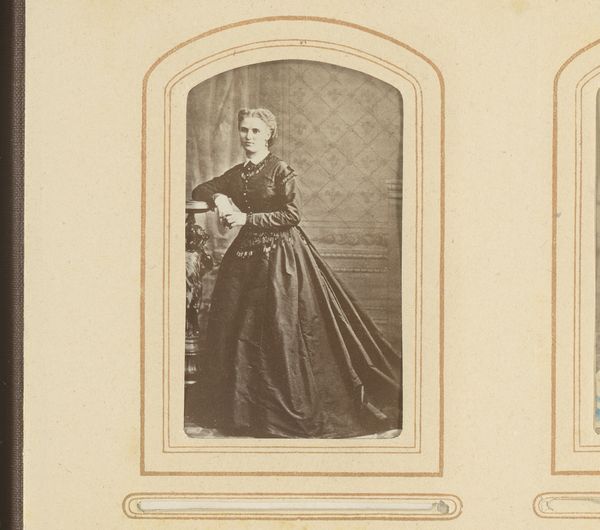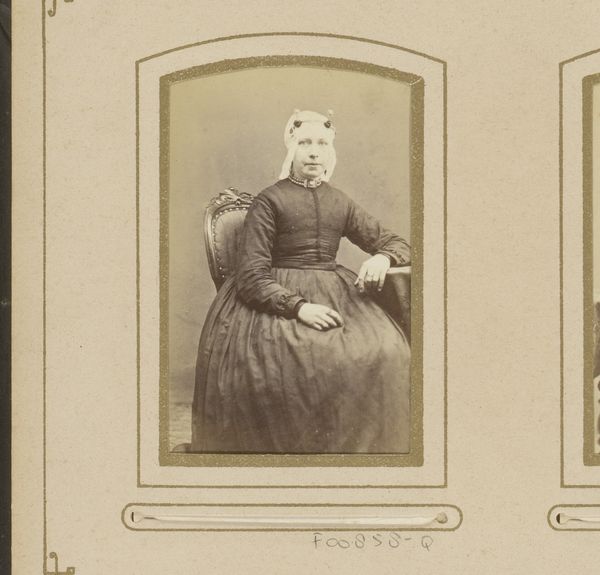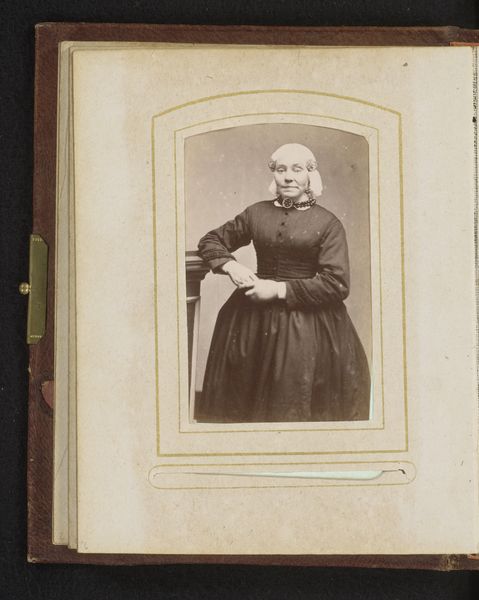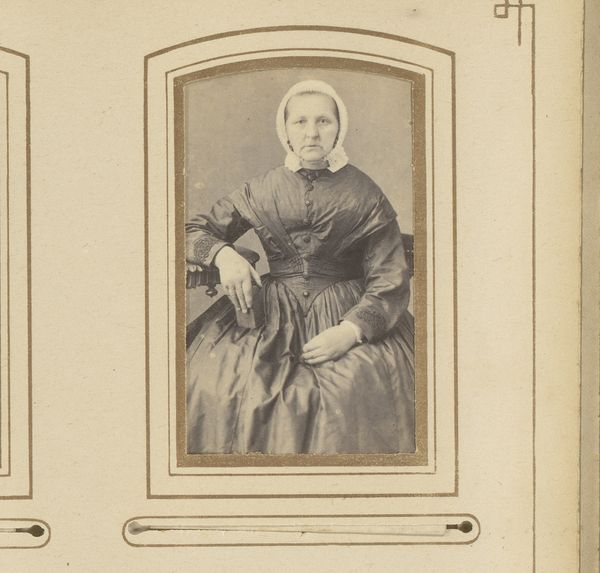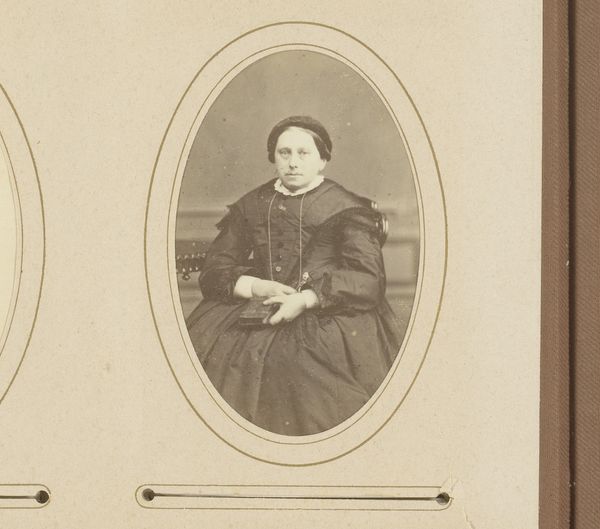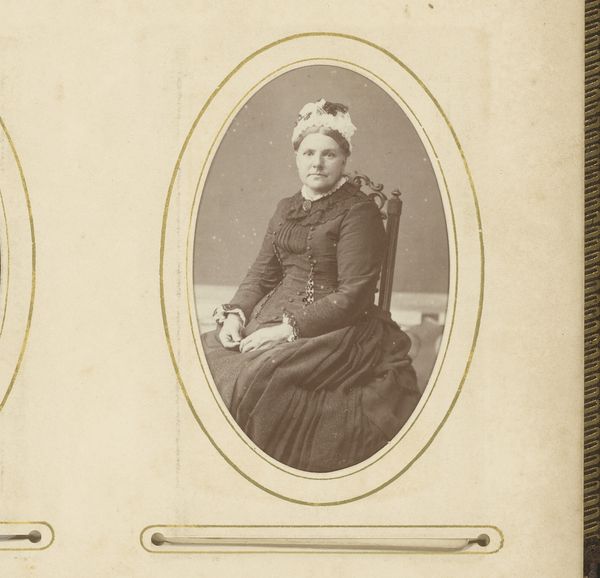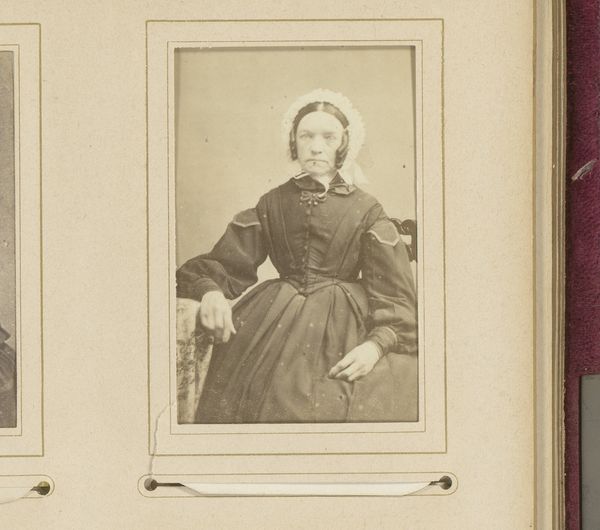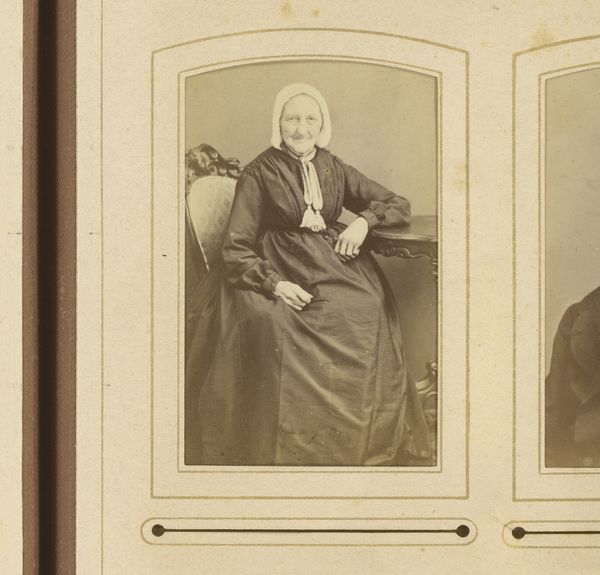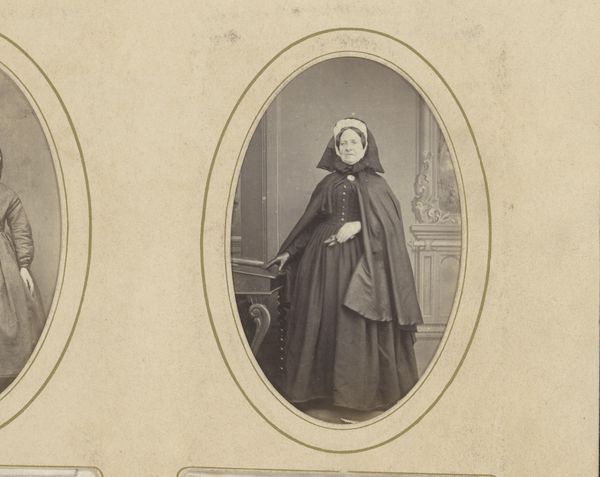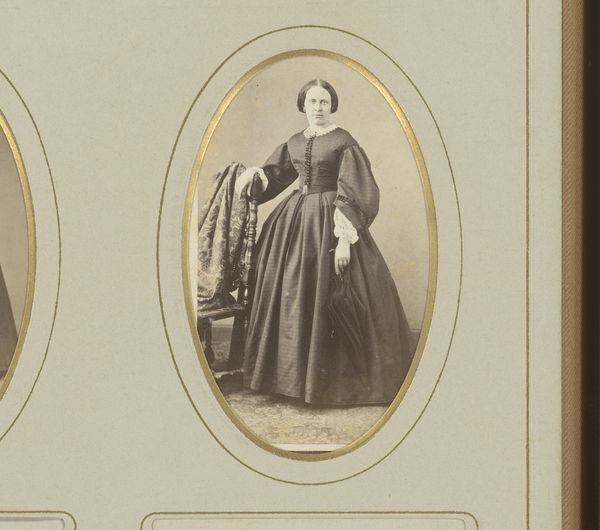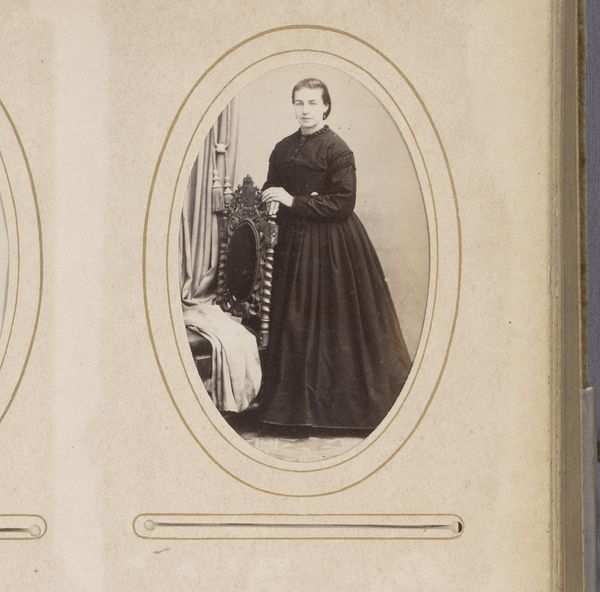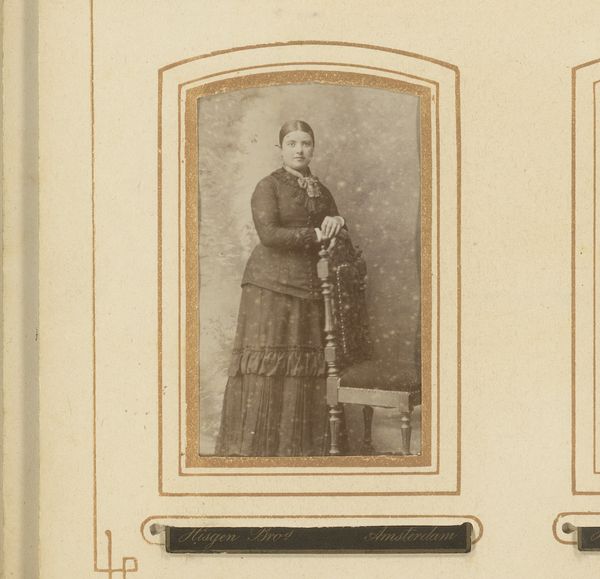
Portret van een vrouw met muts, vermoedelijk traditioneel Enkhuizer 1865 - 1896
0:00
0:00
albertdekema
Rijksmuseum
photography
#
portrait
#
dutch-golden-age
#
photography
#
realism
Dimensions: height 82 mm, width 51 mm
Copyright: Rijks Museum: Open Domain
Curator: This photographic portrait, created sometime between 1865 and 1896, is attributed to Albert Dekema. The Rijksmuseum holds this intriguing image, titled "Portret van een vrouw met muts, vermoedelijk traditioneel Enkhuizer," or "Portrait of a woman with a bonnet, presumably traditional Enkhuizer." Editor: There's a stillness here, an almost melancholic air about this woman. The tones are muted, sepia-like, but it accentuates the details of her clothing and especially her intense gaze. The textures alone hint at so much untold labor and hardship, even class relations in her specific garb. Curator: Indeed, Dekema’s careful attention to detail is quite compelling. Note how the light renders the different surfaces of the dress and bonnet, the textures clearly defined by the contrasts between light and shadow. The composition, while traditional, creates a certain balance with the woman placed slightly off-center. Her averted gaze pulls the viewer’s eye diagonally. Editor: Right. This kind of clothing instantly points towards the complex economic conditions in Dutch society at the time, her traditional garment probably pointing to some connection with regional trade. How does this interplay with assumptions about regional identity and perhaps emerging concepts of Dutch nationalism in that period? The way that she’s positioned and dressed for the portrait suggests her presentation might even constitute silent forms of resistance. Curator: It raises interesting questions, for sure. It highlights a tension in photography from this period. Is it purely descriptive or actively shaping social meaning? The framing—a sort of decorative border—also accentuates her remoteness. It encapsulates her and perhaps by extension, the rapidly disappearing traditional way of life. Editor: The decorative elements are in dialogue with both what we understand about regional identity and dominant patriarchal systems of representation. It would be insightful to investigate how the artist, the sitter, and their intended audience co-constructed the woman's portrait to establish how women navigate such pressures, specifically their gender performance. Curator: Food for further thought, certainly. Dekema’s study of the woman is very compelling, it really prompts such thoughts. Editor: It is a very interesting photograph, even from its technical artistry alone, its visual rhetoric has encouraged so much interpretation and future engagement with this important history and dialogue.
Comments
No comments
Be the first to comment and join the conversation on the ultimate creative platform.
